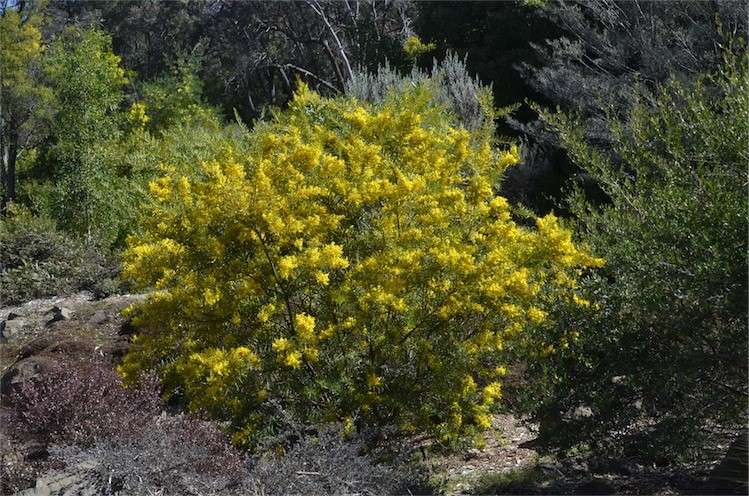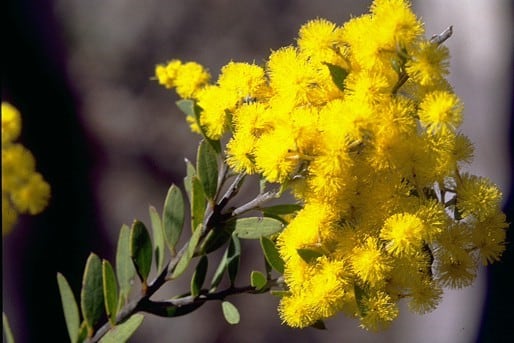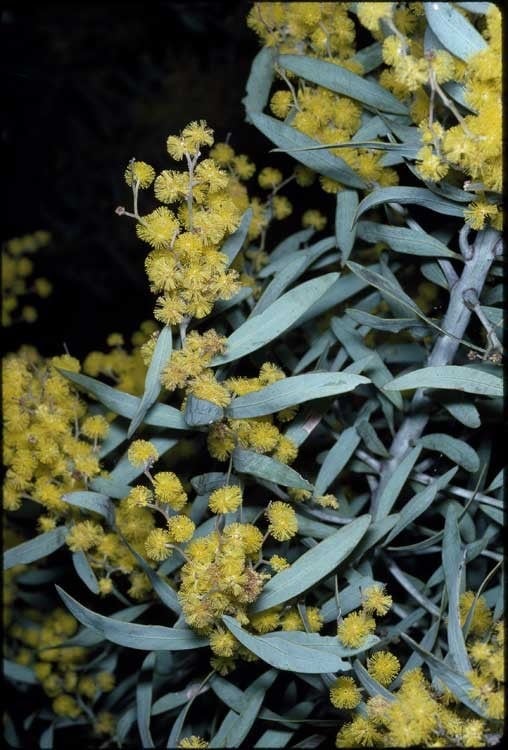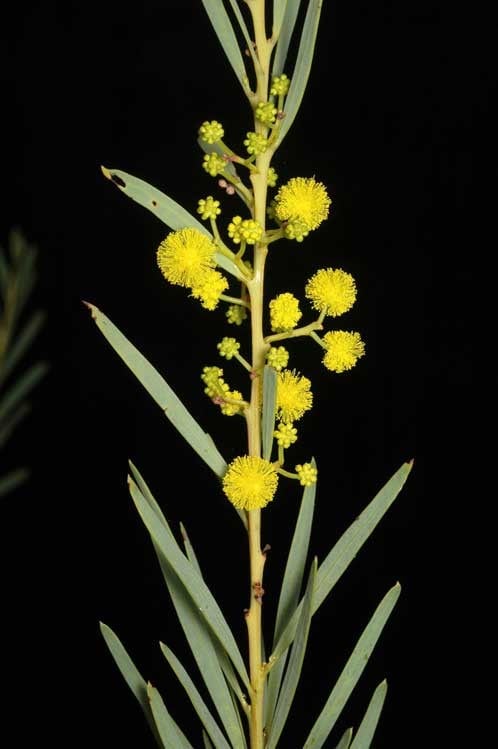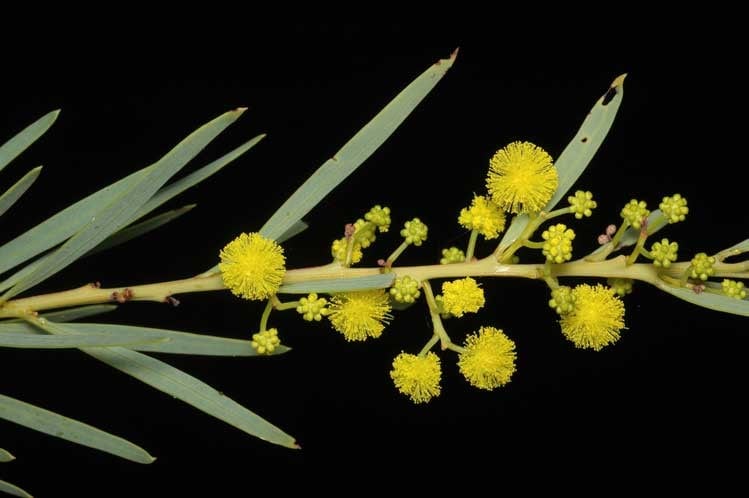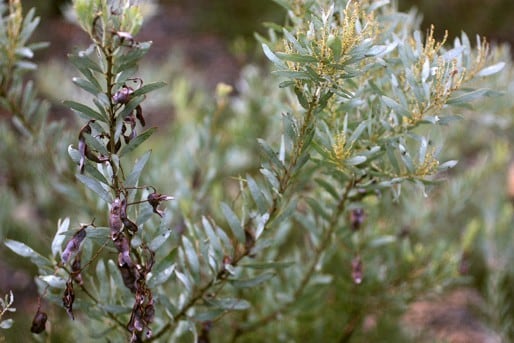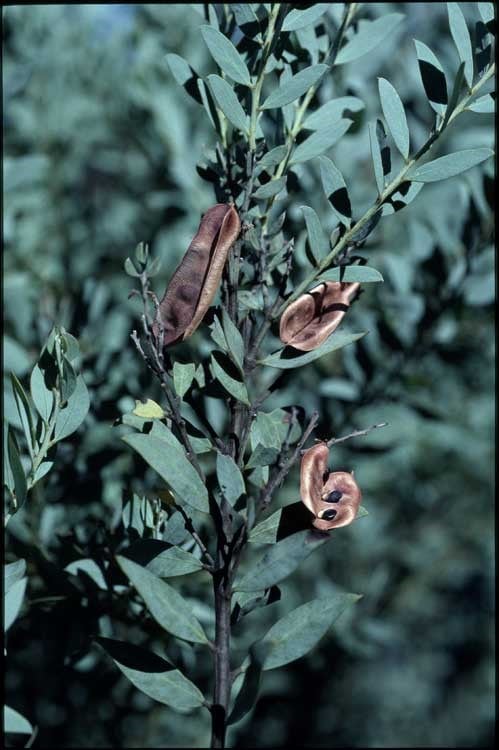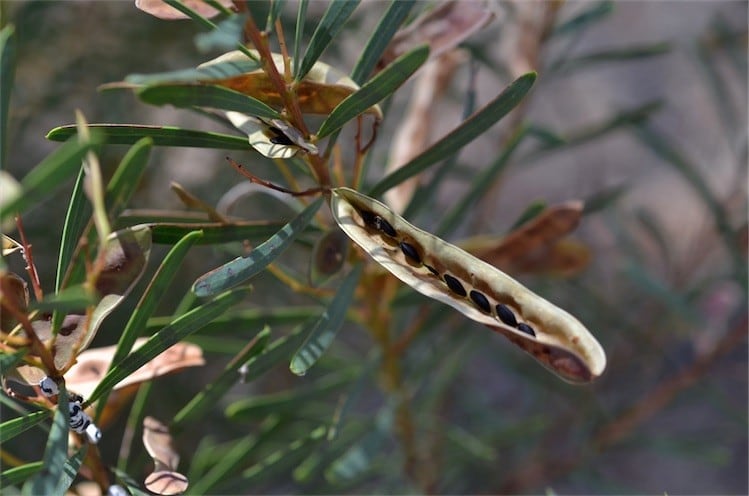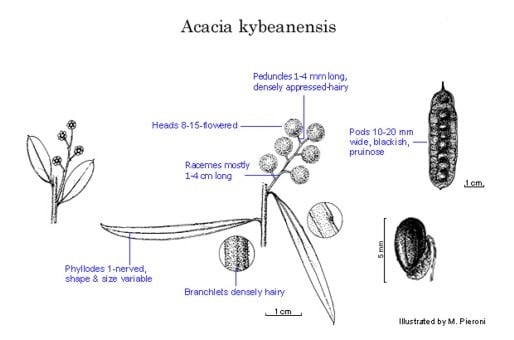Acacia kybeanensis Maiden & Blakely
WATTLE
Acacias of Australia
Common Name
Kybeyan (or Kybean) Wattle
Family
Fabaceae
Distribution
Discontinuous in SE Australia occurring in the Blue Mtns (E of Sydney), Kybeyan Ra. and Nimmo (near Lake Eucumbene), N.S.W., and from Freestone Ck (NW of Suggan Buggan) to the Gelantipy area, Vic.
Description
Dense shrub 1–2.5 m high. Branchlets ±tomentulose to densely appressed-puberulous. Phyllodes occasionally deflexed, slightly asymmetric, oblong-elliptic to narrowly elliptic or lanceolate, 1–5 cm long, 3–6 (–12) mm wide, grey-green to glaucous, glabrous or sometimes sparsely appressed-puberulous, 1-nerved per face; lateral nerves obscure or absent; gland not prominent, 1–15 mm above pulvinus. Inflorescences 4–10-headed racemes; raceme axes (0.5) 1–4 (–5) cm long, usually densely hairy; peduncles 1–4 mm long, usually densely appressed-hairy; heads globular, subdensely 8–15-flowered, bright golden; bracteoles widely ovate to subcircular, dark brown to black. Flowers 5-merous; sepals united, brown; petals 1-nerved; ovary glabrous. Pods stipitate, oblong to narrowly oblong, raised over seeds along midline, to 6 cm long, 0.8–1.5 (–2) cm wide, firmly chartaceous, blackish, slightly to moderately pruinose, glabrous. Seeds mostly transverse to oblique, elliptic to widely elliptic, c. 4 mm long, 3.5 mm wide, arillate.
Habitat
Usually grows in Eucalyptus woodland or forest on rocky slopes, commonly at c. 1000 m alt.
Specimens
N.S.W.: 37 km by road N of Clarence, E.F.Constable s.n. (NSW108538); head of Tuross R., Kydra Peak, 20 Oct. 1948, J.H.Willis (NSW). Vic.: head of Boundary Ck, between Gelantipy and Wulgulmerang, 23 Apr. 1957, J.H.Willis s.n. (MEL).
Notes
The marked variation in phyllode length indicates the need for further studies to ascertain whether the species, as circumscribed here, comprises more than one taxon. On specimens from N.S.W. (including the type of A. kybeanensis and A. oreades) the phyllodes are normally 1–3 cm long, whereas in Vic. they are mostly 2.5–5 cm long. The long phyllode variants may resemble A. kettlewelliae but are most readily distinguished by their ±terete, densely hairy branchlets, densely hairy peduncles and raceme axes, and less prominent glands which are not, or scarcely, swollen within the lamina of the phyllode.
One specimen from Kybeyan Ra. has atypically sparsely hairy branchlets (e.g. Wadbilliga fire trail between Tuross R. and Bumberry Ck, R.Coveny 6604 et al., A n.v., B n.v., BRI n.v., CANB, E n.v., K n.v., L n.v., MEL, NSW, P n.v., RSA n.v., TNS n.v., UC n.v., US n.v., Z n.v.). It appears to approach the short phyllode forms of A. kettlewelliae but is distinguished by the presence of an indumentum and less prominent gland. It is possible that this variant is part of a hybrid swarm between A. kybeanensis and A. kettlewelliae : both putative parents occur in the Kybeyan Ra.
Deflexed phyllodes, which occasionally occur in the long phyllode variant, are sometimes also seen in A. boormanii.
FOA Reference
Data derived from Flora of Australia Volumes 11A (2001), 11B (2001) and 12 (1998), products of ABRS, ©Commonwealth of Australia
Author
B.R.Maslin
Minor edits by B.R.Maslin & J.Rogers
This identification key and fact sheets are available as a mobile application:
URL: https://apps.lucidcentral.org/wattle/
© Copyright 2018. All rights reserved.
